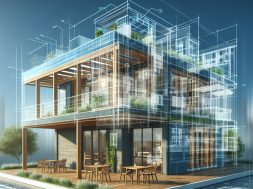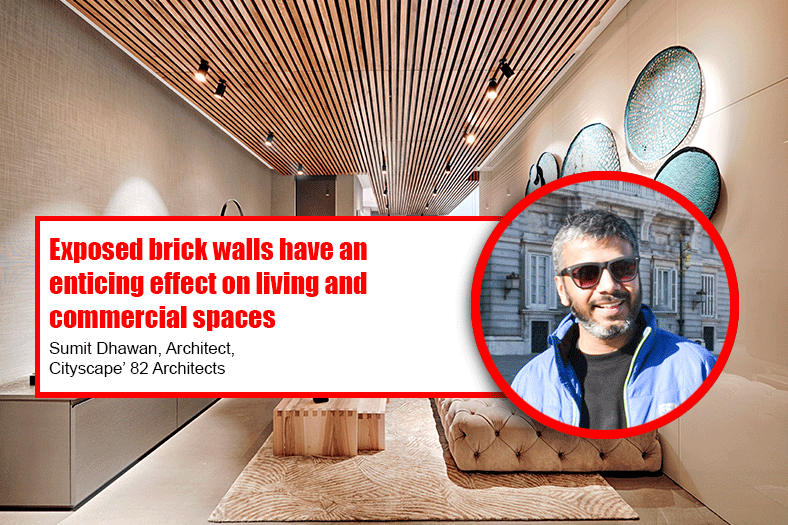The definition of Indian architecture is contextual

Right definition of Indian architecture and design would be an architecture or design through which we celebrate Indian traditions in its context. It should not only act as a shelter or form for many functions but also gives a sense of completeness to the idea of Indian culture.
Considering India in itself has a vast syntax of architecture and design, what in your opinion is the right definition for Indian Architecture and Design?
India is a vast and a complex country with a pluralistic society and range of religious, geographic, ethnic and climatic diversity. Right definition of Indian architecture and design would be an architecture or design through which we celebrate Indian traditions in its context. It should not only act as a shelter or form for many functions but also gives a sense of completeness to the idea of Indian culture. It should be the very embodiment of spirit of Indian life. Indian architecture should have a sense of pride and identity.
However, most of us have not understood the architecture of India, as we call it- neither from our traditional architecture, nor in terms of its construction processes. The materials we use today-concrete, steel and glass – are the ones we see and these are the materials we are the most familiar with nowadays. However, a majority of India has been built using natural materials such as mud, brick, wood, stone, bamboo, lime. Most of us do not know these materials have been used in India since our textbooks do not cover these aspects. Hence, we use steel, glass, concrete etc., since they are being used worldwide or because the manufacturers want us to do so.
As we get globalised day by day, are we in the midst of an identity crisis in the architecture and design sense?
In today’s world, due to easy access to information, we learn of developments across the globe instantaneously. Most of the modern development in the cities look very similar, whether it is Singapore, Shanghai or New York. We can see Indian architecture heading in the same direction. Our urban areas are blindly following the western language of office-building-first creating glass box, then closing it with curtain and blinds to avoid glare on the monitors, then switching on all the lights and pumping more energy for the so called 5star rating AC to reduce heat gain through the glass. This is a criminal waste of resources. We need to look at it from the local/regional perspective, responding to our climate, the technology available, the context and culture. On a larger scale, what we generally see are glass buildings that are cropping up with no relevance to the context and surroundings they are built in.
Japan and Sri Lanka are two prime examples of countries that have their distinct style of work. Japan’s sensitivity to minimalistic, austere architecture, use of tatami mats and Zen gardens reflect their philosophy. As for Sri Lankan architecture, it is a true response to their warm and humid tropical climate.
When every city is unique in its own way and should evolve in a way which preserves that uniqueness, our role model cannot be Shanghai or Hong Kong or else every city in the world would begin to look the same! Architecture must be evolved with the reference of the social, political, economical and cultural context rather globally.
When it comes to traditional Indian architecture, which project in your opinion is a landmark project?
Any village house built without help of an architect would be a landmark project in my opinion. That village house is not merely a style but it is an attitude which carries holistic lifestyle. Village settlements in India often take on the shape and form that is dictated by the climate they are in, or the socio-cultural norms that they are designed to preserve and protect. For example, village settlements in Uttarakhand are often characterised by houses of stone, timber and mud mortar on slopes, with thick stone walls of coursed rubble masonry designed to ward off cold, with a shelter for animals below the main house (the heat given off by mulch animals heats the house above further). In Kerala, village houses are slope-roofed with Mangalore tiles and thatch to draw off and channel rain. In Assam, the same houses are often built on stilts, the better to counter the often damp ground. In Punjab, whitewash on the outside walls helps to cool down the summer heat. The list could go on, but in each case we see that villages in India’s diverse regions has evolved a unique way of responding to the climate and the environment that is sustainable, shows an intelligent approach to the problems of climate, and is a delicate balance of social and cultural factors through spatial vocabulary such as walls, courtyards, floors and semi-private and private spaces.
When it comes to contemporary architecture, which project in your opinion reflects the inherent ‘Indianness’ in the present timeline?
There are many but Jawahar Kala Kendra by Charles Correa is one of my favourites.
How much say will technology have in the future of architecture?
Technology is good only if we use it wisely. Looking at the climate change issues, sustainable architecture is the need of current time. One challenge to India’s acceptance of sustainable architecture is the gap between technology and economic condition. There is little sense in spending millions on the best technology to create the greenest of green buildings if very few Indians can associate with them and even fewer can afford. By limiting itself to sustainability that is dependent on technology for solutions, sustainable architecture in India fails to incorporate the critical dimension of social and cultural sustainability without which it may not work in the Indian context. To be environmentally sustainable, architecture would need to also register the social, political, economical and cultural context of India and offer solutions that are sensitive to its particularities. By the use of technology, we should research on our old buildings and learn from it.
Himanshu Patel, Principal Architect, d6thD Design Studio
Cookie Consent
We use cookies to personalize your experience. By continuing to visit this website you agree to our Terms & Conditions, Privacy Policy and Cookie Policy.









